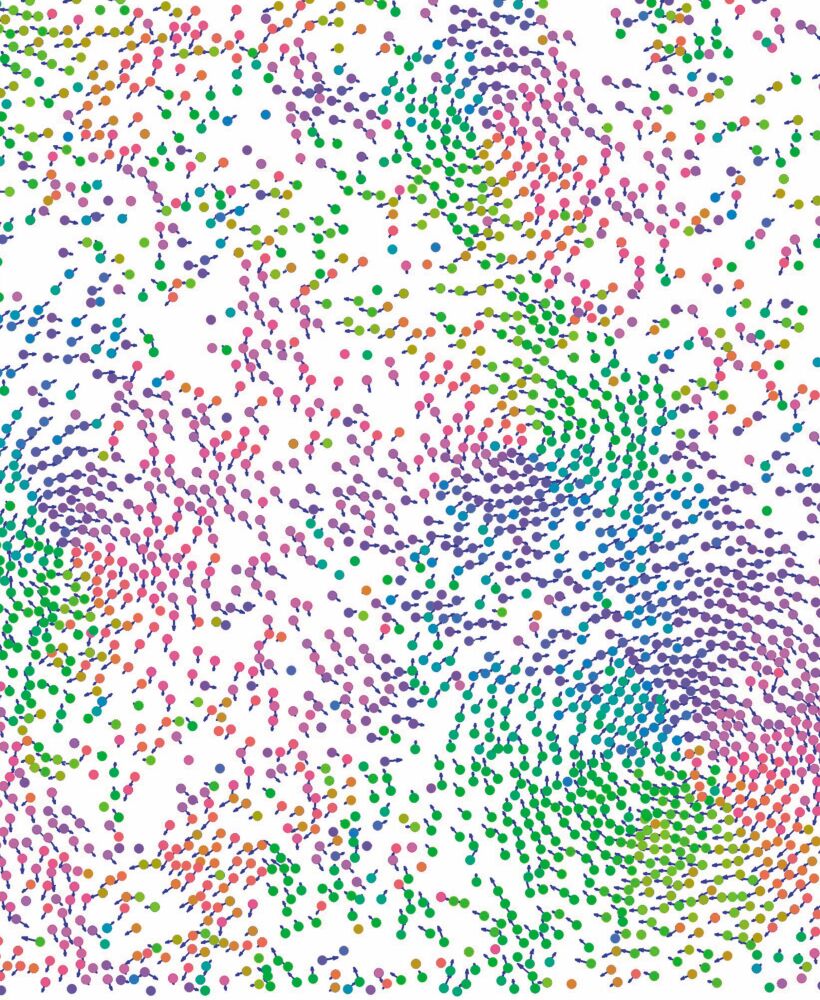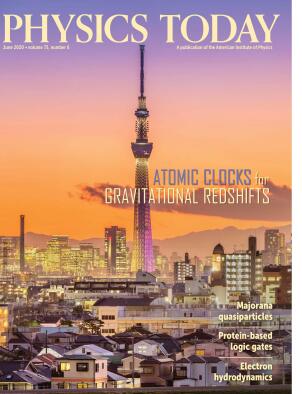Self-propelled, emergent vortices
DOI: 10.1063/PT.3.4508
Swarms of bacteria and the cytoskeletons of living cells move collectively through an environment by maintaining a nonequilibrium state in which they gain energy from an external source (see the article by Robert Evans, Daan Frenkel, and Marjolein Dijkstra, Physics Today, February 2019, page 38

Snezhko and his colleagues put about 10 000 ferromagnetic nickel spheres with diameters of 125–150 µm in a flat, water-filled petri dish and applied a uniaxial oscillating magnetic field with a tunable frequency and a strength of 35 gauss. A sphere’s initial state determines its direction of motion rather than the magnetic field. This velocity-field image shows the collective motion of the particles and the multiple vortices that emerged locally and independent of the system boundaries when the spheres are exposed to a field frequency of 40 Hz. Particles of one color travel in the same direction, and multicolor, circular vortices indicate a collective clockwise or counterclockwise movement. The macroscopic motion formed by the microparticles may help researchers design self-assembled dynamic materials. (K. Han et al., Proc. Natl. Acad. Sci. USA 117, 9706, 2020, doi:10.1073/pnas.2000061117
More about the Authors
Alex Lopatka. alopatka@aip.org
